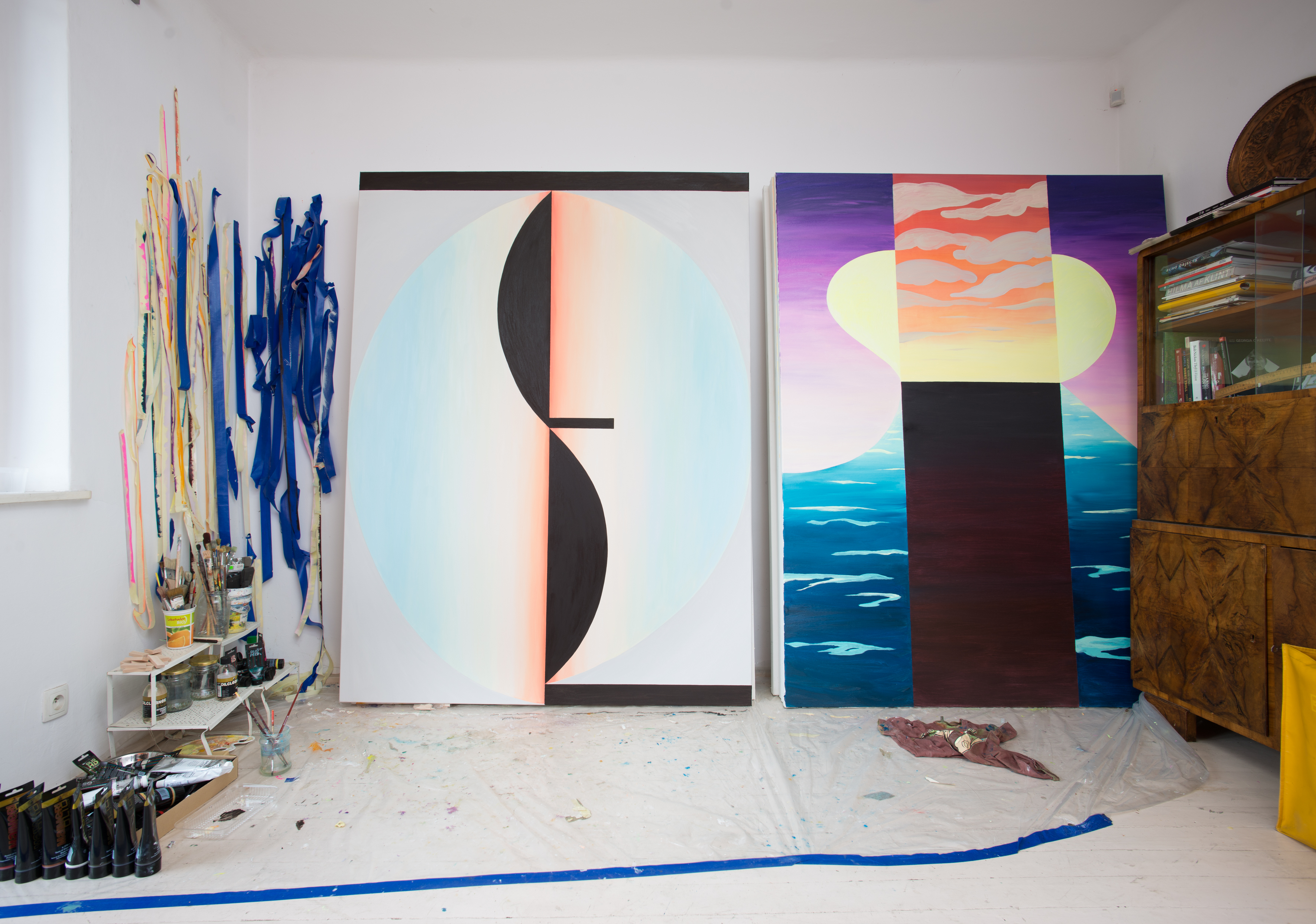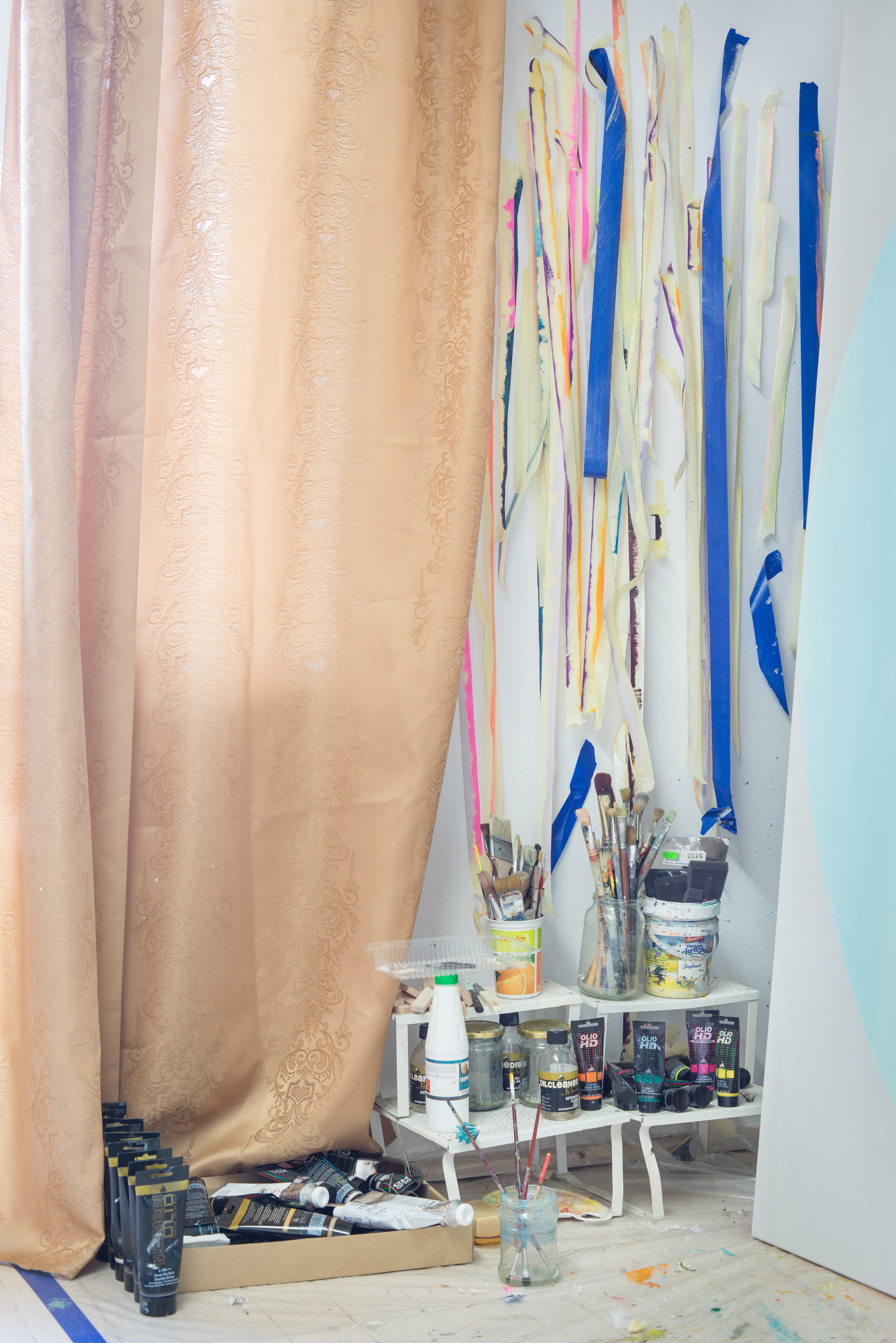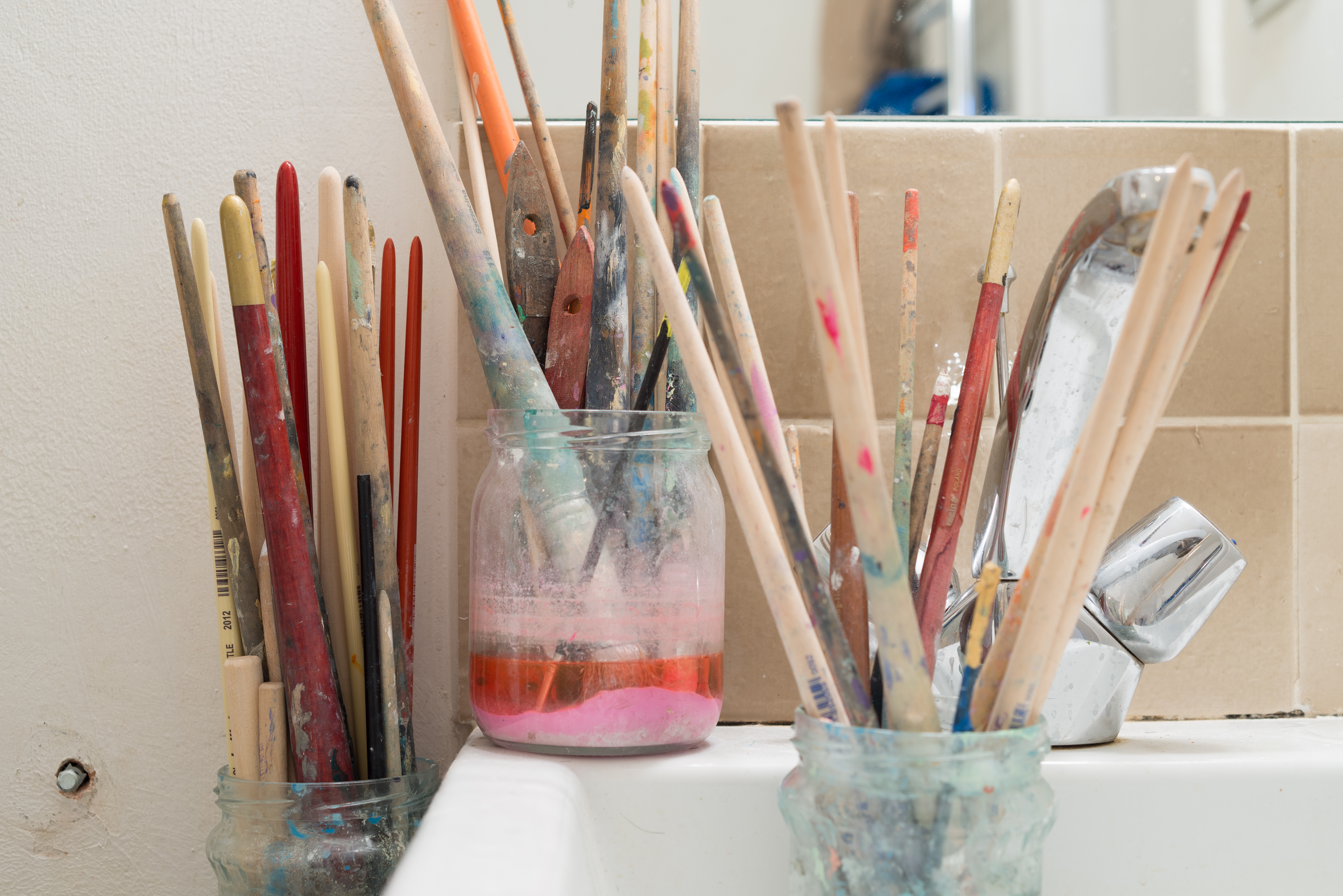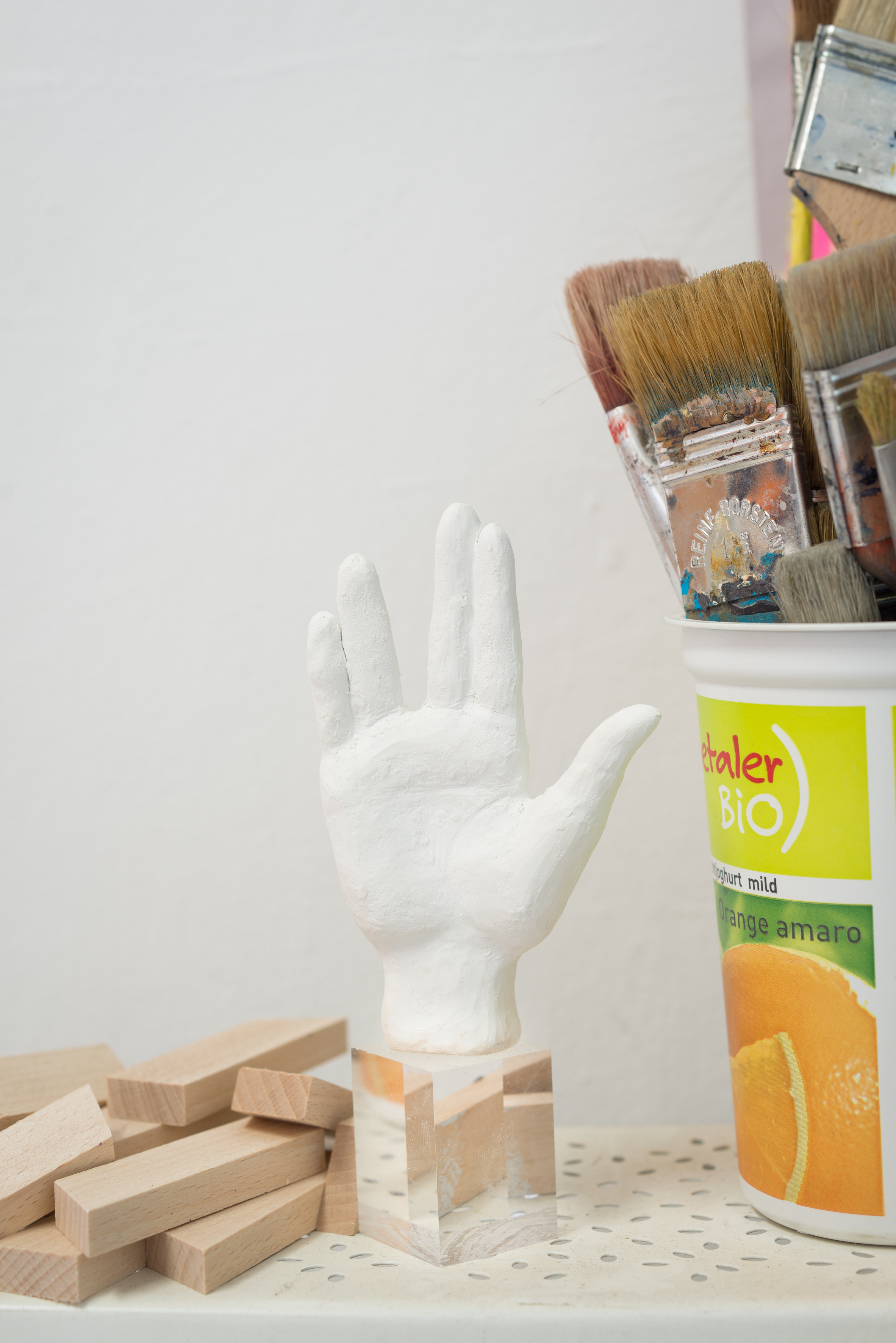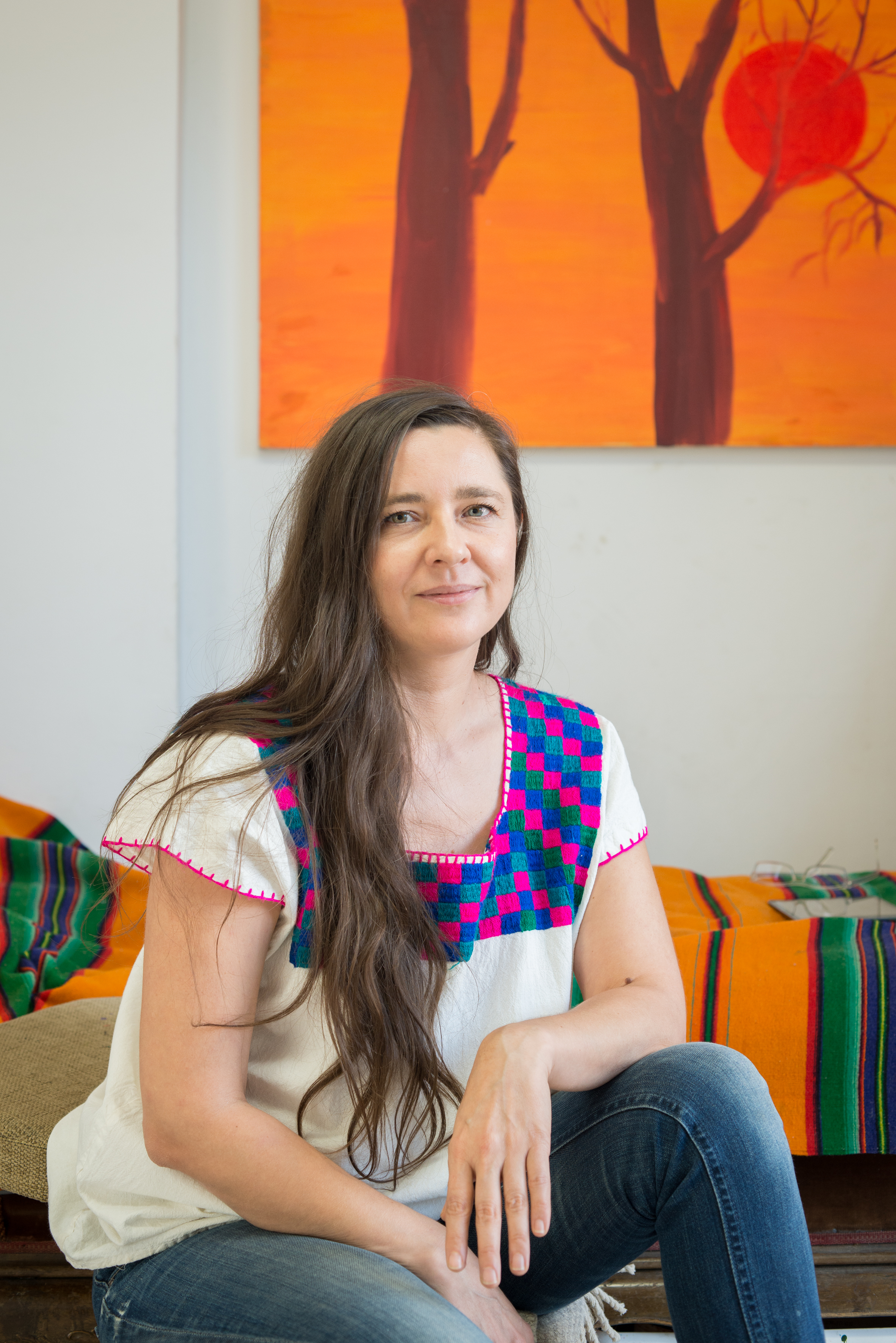
The Polish artist is currently based in Warsaw, where she has been creating work for her latest exhibition at London’s Marlborough Contemporary. This all occurs quickly, with ease, grace and joy opens tonight and will include a selection of paintings and a Taiko drum that is intended to connect with the energetic vibrations within the paintings. Brzeżańska spoke to us from her Warsaw studio, as creation for the show was underway.
How has the development of this body of work been progressing?
You know, it’s always very enjoyable for me. I’ve been working on it since March, but painting is a very weird process. I have to get disconnected from most other things when I do that. For every show I do something from the very beginning, something that I have never done before. It does stay in the same line of thought and intention, but time is changing, my place in the world is changing, my experiences are changing and they bring a lot of new inspirations and a new vocabulary.
Can you explain the title for This all occurs quickly, with ease, grace and joy?
It is what these paintings are, they are based on this magical technique which is called sigil, a sort of spell, a sort of enchantment, like a wish that you want to bring to the work. I wrote some major wishes for the world, for the change that I want to see in the world and I coded it in these paintings.
So, you will be showing these paintings and also a Taiko drum that can be played?
Yes, painting is such solitary work and for most of my shows I usually combine it with something else that is not such a destined experience, but something that is happening more in physical reality. I was invited on a trip by a friend of mine who is a great artist and I joined her for a week. On this trip I discovered a Taiko drum maker and I thought it would be a great idea to have this performative thing in the exhibition, something present that would make it open to nature — our connection with reality is closer to nature than to culture. I’m not performing the drum, I would like to leave it open for people to use it.
To what extent do you like to lead your viewers towards a certain action or a specific understanding of your work?
I certainly refrain from saying what the long titles of the paintings are, so you can see only an extract and it should stay like that. Part of this technique is forgetting what it means and releasing it. I think that interpretation very much hinders perceptions. I think that people have much better access to the deeper meaning of things if we stop verbalising and overly describing things with words.
Do you feel the weight of history on your work as a painter?
I was schooled in a very efficient manner and it took me many years to unlearn. It’s a difficult thing to do but I think for everyone it is a necessary thing to do, we need to unschool ourselves quite profoundly. It’s not only about artists, it’s basically about everyone who has gone through the education system.
You explore a range of subjects, from physics to cosmology and new technology. Do you come across any contradictions between the natural, cultural and technological?
The culture of art is a vocabulary in a way. But using this vocabulary it is very important to communicate something real that is happening, and these processes that go through me. It’s sort of like channeling this bigger force which also is expressed through cultural human activity. I think most artists understand that very well. But, I do think technical development is amazing. It is not such a bad thing. I enjoy what is going on with technology a lot because finally we have tools to do what we want in the way that we want. We can communicate much better and it is changing global consciousness on a very profound level. The dark side of it is totally terrible, with pollution and the military and the military-industrial complex, but we finally have tools to deal with it and I’m sure that we will figure it out.
You speak often about language, do you feel this can be a hinderance on communication and consciousness?
For me it’s always a crude translation of what I would like to say, but it doesn’t limit us. When you turn off this verbal processor in your mind, then you have access to everything. And it is possible to turn it off, because it is just a tool.
This all occurs quickly, with ease, grace and joy runs from 18 September – 31 October at Marlborough Contemporary.
Photographs © Szymon Roginski
